This is a guide for shellgame in Startup as it currently exists. The deck will almost certainly look different on the release of Midnight Sun, although the information here may hold regardless. Shellgame is also a distinctly different deck from grinder and Prana Personal Evolution, although these other decks often have shellgame elements.
I’ve played against shellgame a lot. Anyone who plays Startup on Jinteki.net has too. Andrej had the bright idea of showing it off on a recent stream, so on bad days can expect 50% of your games on Jnet to be against this NPE.
I also enjoy playing shellgame every now and then. Contrary to popular opinion, I think there’s a high skill cap, and I would like to shed light on why. In doing so, I would like you, dear reader, to appreciate what goes into playing and playing against the shellgame, and hopefully this will improve your play.
Since this will focus on decision making, I won’t be covering deck building.
Part 1: Our mindset going in
What is skill?
I agree 100% that traps are more fun to play with in person. However, it’s really dubious that it takes more skill in person.
If there’s anyone in the world who can consistently tell when a person is lying, hire that person for a billion dollars. Corps lie. Corps can say truths. But there is only one line of play that objectively wins the most.
What I’m saying is to leave your psychic abilities at the door, because they don’t exist or matter. Skill is about increasing your chances of winning, and soul-reading just isn’t a very large part.
It’s significant for sure, but it’s the last 1% of skill you need to learn. The first 99% is far more important. Keep this in mind going forward.
How is shellgame even a strategy at all?
This question is fascinating because objectively speaking, shellgame seems like a terrible strategy. You provide free access to all your servers in a game about defending your stuff.
Tempo is an essential element of card games. Shellgame is not exempt from this rule. Instead of generating tempo with assets, or forcing runs through ice, modern Shellgame decks want to overload the Runner’s tempo on essential turns by attacking their hand and exploit the Runner’s stumbles in tempo to find an opportunity to kill.
Shellgame, even without the absolutely wild cards from H&P, has the ability to overload the Runner. It’s up to the Corp to find these opportunities, and the Runner must avoid them.
Section 2: Playing as Shellgame
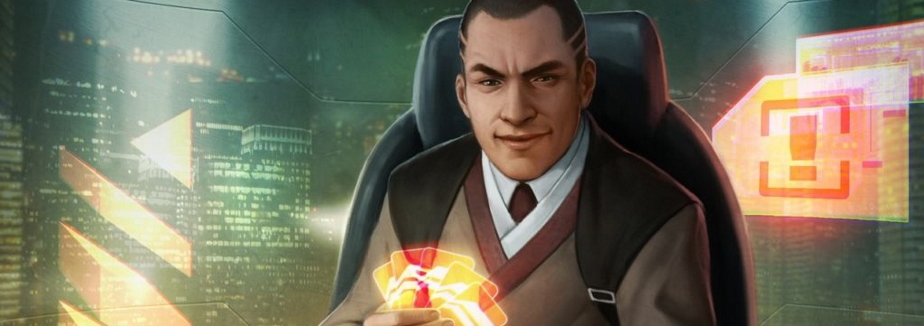
General Win Conditions
Scoring out is extremely rare, simply because your servers are undefended. Even if you are about to score out, it’s more likely that the Runner flatlines themselves trying to find your last agenda than you actually scoring it. Ignoring cases where the Runner does something blatantly suicidal, we must do one of two things:
- Force the Runner’s hand size low at the end of their turn, then finish them off.
- Double barrel the Runner with some combination of damage to kill them when they have a full hand.
The former is significantly more common. The main threats that force a low hand size at the end of the Runner’s turn are:
Cerebral Overwriter: The trap that runners fear the most. There’s no reliable way for them to avoid it besides not running at all, so it’s one of our best draws.
False Lead: You can fast advance this with Trick of Light if needed. The Runner must play carefully around sudden damage, because False Lead will consistently deny two draws when going for the flatline.
Sometimes we won’t be able to land brain damage or score False Lead. We must be able to exploit the Runner some other way. Remember the concept of tempo. The Runner knows that House of Knives and False Lead make the game much harder to win, so they must check our remotes unless they want a free loss. We want to construct a situation where they can’t check them all unless they want to die, but we must play to overload them.
Ordinarily, we can only win if the Runner allows us to have cards on the table. We must flip this script so that they can’t stop us from having cards on the table. This leads us to an important point.
Our remotes are empty…
…and we’ve just installed an Engram Flush on HQ to dissuade the Runner from stealing Vulnerability Audit out of our hands. We are sitting on a healthy number of credits on our third turn, so now it’s time to play the shellgame with our installable cards.
In this situation, there are only two things you should ever, ever, be doing.
- Triple install
- Install-advance-advance
Never, ever do anything else. There is never a good reason, and that is no exaggeration. The former is always better unless the IAA is Cerebral Overwriter. If you can somehow not do either of these, just do econ and click for creds.
No other play accomplishes anything at all. This isn’t 2020: Without Psychic Field, there’s no single unadvanced card for the Runner to fear.
Triple install and IAA are the best tempo plays possible, so they are the only viable ways we can snowball our board state and prevent the Runner from checking everything. Remember: if they manage to remove all our cards, we don’t have a way to win. We must force something to stick.
The reason triple install is better than IAA is because the most damage the Runner can possibly take from IAA is 4, while triple install can easily snowball. You’d like to follow IAA up with either another IAA or a triple install.
Include at least one of these, ideally more, in a triple install:
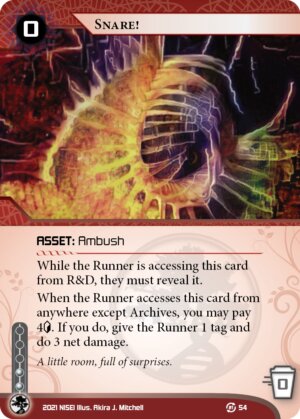
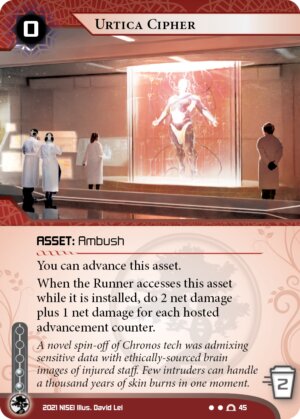
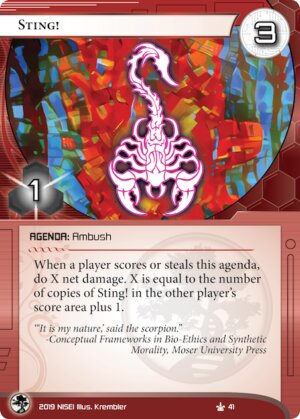
Snare!: 3 net damage is usually enough to scare the Runner off for the rest of their turn.
Urtica Cipher: 2 net damage for 0 credits, 0 points lost is quite a good rate. However, Urtica is unlikely to stop the Runner on its own.
Sting!: If the Runner steals 2, Trick of Light makes the third a surprise 4 net damage. Sting is a fine agenda to lose or score for this reason.
What makes a good triple install?
- At least one of the cards must be something we want to survive. If there isn’t, what’s the point of investing 3 cards?
- If some of the above 3 cards are in the triple install, then the Runner probably can’t check all of the installs without risking death.
Point 2 is important to emphasize. If we install False Lead and two House of Knives, little is stopping the Runner from just stealing 3 points and screwing us, and if they know the matchup at all, they will check everything.
Now if everything’s gone to plan, we have a board that’s sticking and can threaten the Runner on a future turn.
Best IAA targets for a follow up:
Urtica Cipher: 4 damage is seriously scary, but only when we already have a board with cards like Sting lying in wait.
Clearinghouse: Clickless damage makes Clearinghouse stronger than Ronin, if not for the influence cost. Ronin is still great, so don’t feel bad about using it.
The art of follow-up plays
Follow up plays are how we snowball our board state. We seize tempo when the Runner hits a trap and ends with a small grip, and we also seize tempo if we have unchecked remotes. Triple install tends to be a better initiating play than IAA, but IAA is just as good at following up.
Let’s go over everything we can do, now that we’ve opened opportunities for ourselves. What I want you to realize is that reading the Runner’s intention does not matter. We have seized tempo already: we play whatever cards we draw to increase our lead in order to threaten the Runner’s life. There are only good plays that do so, and bad plays that slow us down.
Low commitment follow up options
Single install: Snares, 1 pointers, possibly an advanceable asset. Often after dumping a triple install, we won’t have something good in hand to IAA. You can, of course, score a 1 pointer, but it is very slow. It can be correct, if you have tempo, to just install one card on your turn. Unlike installing a lone single from an empty board state, doing so when we have tempo makes the single unusually more annoying to check. You almost never want to install a Neurospike target this way: IAA the agenda instead.
Triple advance an installed asset: Usually you will do this with an Urtica that survived the triple install, but you may do this play with any advanceable asset. The implied threat to the Runner is that a card with 4 advancements, and another at 3, is an immediate threat of double Ronin. Triple advancing can be expensive, but usually forces an immediate reaction from the Runner that can brutalize them, especially if they mismanaged their own hand size.
Now that we have a good understanding of the plays at our disposal, let’s go over every IAA target.
Cerebral Overwriter
Cerebral Overwriter can be an initial IAA which has good odds of landing an easy 2 brain damage, or it can be your best follow up. This is just the best card in our deck.
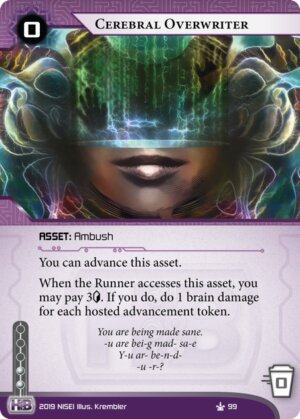
To reemphasize, we can only win if the Runner allows us to build a board, so they ideally want to check and trash everything. Cerebral Overwriter is the only card that gives us permanent damage if checked.
Sometimes, such as when being pressured on centrals, or if you drew multiple, you can include Cerebral Overwriter in a triple install, then triple advance it the next turn to threaten Ronin/Clearinghouse. 3 brain damage is a lot, and it’s very hard for the Runner to win at that point.
Urtica Cipher
Seriously, people need to stop IAA’ing this from an empty board state. It’s a bad play to do unless your hand is bad, in which case you can maybe get some tempo and have a chance of playing the game.
It’s too good as a follow up or as part of a triple install to so easily let it be trashed.
If you have options, ideally you’d choose Urtica Cipher if you are already threatening damage like Sting or Ronin on the table. The threat that an Urtica is actually a double Ronin setup can force the Runner into danger.
Ronin
You do not ordinarily want to IAA this from an empty board state. A lone 4 damage Urtica isn’t a scary threat at all, and it’s one we invest 2 credits and a turn into, leaving only Cerebral Overwriter as an actual scary trap. 2 brain damage is annoying, but if nothing sticks, it’s very hard to kill the Runner. There are simply more things we want to stick than there are things the Runner wants to avoid, so it’s practically always correct for the Runner to check a lone IAA.
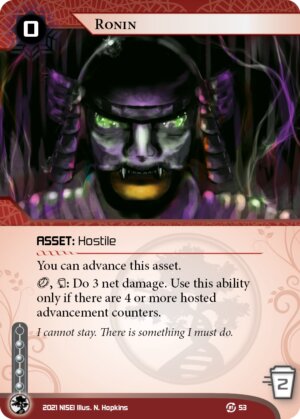
However, it is a very good follow-up play because if there are already cards on the table, the Runner must fear Urtica into more damage, so it may stick. It’s a mediocre card to include in a triple install, but you have what you have.
Clearinghouse
Not much to discuss honestly. It’s a clickless Ronin that can potentially kill on its own if you have the resources to slow roll it.
If you are double-barreling the Runner, this is going to be a part of it outside of double Ronin. Just count your damage, because a clickless 2 (or more) damage is a hell of a lot.
2 Pointer or Vulnerability Audit
I know I said I wouldn’t discuss deck building, but I really don’t think you should play Neurospike and Vulnerability Audit. In case you play them, this is for you.
Only IAA an agenda as follow up if you’re flooded or have immediate Neurospike potential.
Neurospike threatens a lot of damage, so I can see the appeal. I would never recommend IAA’ing an agenda from an empty board in any conceivable situation, even if you have 5 in hand. You would rather triple install them as a last resort.
Just use Neurospike agendas as very high risk Ronins when IAA’ing them.
Summary: Key takeaways for shellgaming
- Start with triple install or IAA Cerebral Overwriter.
- Once you have a board, make it larger with installs and advancements to threaten more damage.
- Expect the Runner to check at least one thing a turn, even if you installed nothing new.
- Best kill setups are Cerebral Overwriter/False Lead into more damage.
- Most importantly, reading the Runner doesn’t matter. Just build up your board by whatever means available.
Section 3: Playing against Shellgame
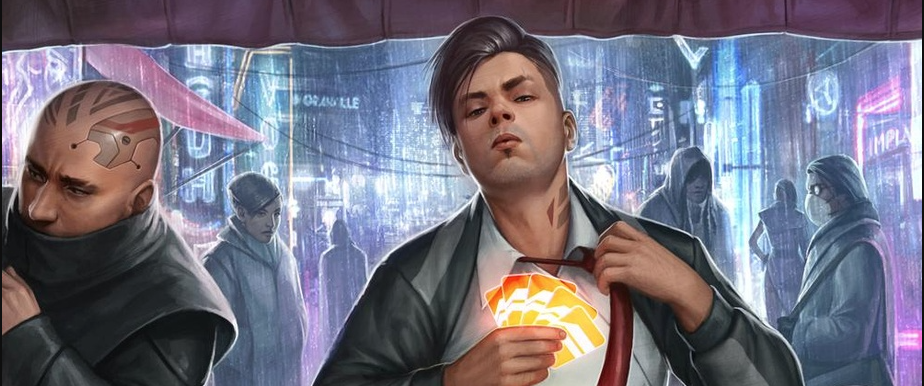
Let’s get something clear, straight away, that’s very relevant to running. Shellgame is not a good deck. Even with an unoptimized deck with the worst imaginable shellgame matchup, you should expect at least a 60% winrate. This is important because of the most valuable lesson I can possibly give, and it’s one that a lot of people don’t understand:
Reading the Corp doesn’t fucking matter.
If you play the same, optimal way every time, you guaranteed win most of the time no matter how hard the Corp tries to mindgame you, so why do anything different?
We started with Corp analysis to know what they want. Let’s learn to counter their plan.
Countering their wincon
From an empty board, there’s only two ways the game consistently spirals into a kill, and all of them require either brain damage or False Lead.
- You took a bunch of brain damage. The Corp can now freely snowball and set up any kill they want.
- You ended your turn with few cards because of False Lead or Cerebral Overwriter, and the Corp has an advanceable ice. They Trick of Light a Sting to kill you with a bunch of net damage out of nowhere.
What you should realize is that both are difficult for the Corp to accomplish and are totally draw reliant, and in the case of the second, most Corps don’t run advanceable ice.
If they managed to build a board, then they can kill us. As such, we must do everything in our power to stop them from setting up a board and snowballing it into a potentially lethal threat. This leads into three main priorities:
- Hand size at the end of the turn is more important than gaining credits or removing tags. Aim for a hand size of 4 or 5 at the end of your turn, even if the board is empty.
- If we start with 5 cards in grip, try to check a remote first click even if nothing was installed last turn.
- If everything has been checked, pressure centrals to prevent the Corp from having the means to build a threatening board.
If the Corp never builds a threatening board, we win! Try to check everything, as long as we’re safe.
Good cards we want to use:
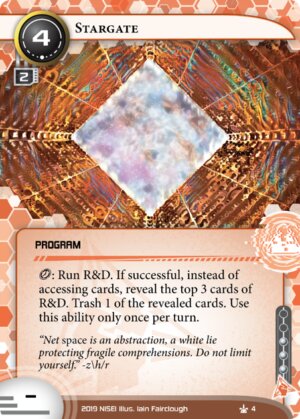
Stargate: Evade traps while trashing everything valuable. Prioritize Cerebral Overwriters over everything besides the winning agenda. This is probably the strongest card in the matchup.
Imp: Get that Trick of Light out of here. Shellgame runs low on resources, so anything in HQ is valuable.
Big Econ: We want to hit centrals at some point, so we should prioritize “dense” econ that gives more value for our hand size.
Card Draw: Against shellgame decks in particular, we aren’t typically worried about being grinded out as long as we slow down once we’re halfway through the stack. The tempo of playing Diesel to safely check remotes outweighs the value it has of soaking damage. If you believe you’re against a full grinder deck, then this is the wrong guide, but you should be more cautious playing Diesel against those kinds of decks.
Bad cards we want to avoid using:
Dirty Laundry: Gives only 3 credits while taking a card away from our grip and catapulting our face into possible Snares.
Multiaccess: Keep Legwork in your hand and don’t become a statistic.
If the Corp does these mistakes from an empty board, run them ALWAYS:
Single Install (unadvanced): There is literally no way this can cause threatening damage. Run it.
Double Install: There is still no way this can cause lethal damage. The most possible is double Snare, so you can draw up for the second run.
Install-Advance-Advance: The only way this seriously hurts is Cerebral Overwriter. Most of the time, it will cause no long-term damage.
But what if they’ve read this guide themselves?
Look, it can’t be said enough:
It doesn’t matter.
If the Corp is lucky enough to draw double Cerebral Overwriters and knows that we check them every time, good for them, we lose. But on a pure numbers game, we have more expected value if we check everything.
It’s simply too unlikely that the Corp draws enough legitimately threatening traps (basically only Cerebral Overwriter) to frighten us off our game plan of checking every remote at some point.
Dealing with Triple Install
Oh no, the Corp knows what they’re doing. It’s dangerous to check all three remotes in the same turn, but recall our priorities: Keep a full hand, and check a remote early in our turn using this full hand. Triple installs are too dynamic to cover all possible situations, but here are the important things to consider:
- If this is Snare, do I die?
- If I hit a trap, do I die to Sting?
Always err on the side of caution, but if there’s no way you can possibly die, then feel free to check all three remotes. Even if we miss checking a remote, that’s okay. We will check it next turn if possible. For example, if you hit House of Knives into Urtica, you will end up on 2 cards. Use your remaining two clicks to draw twice and get up to a safe 4 cards so you can safely check remotes next turn.
Transitioning to Centrals
At some point, you will want to check centrals, if only to stop Cerebral Overwriters from hitting the table, and you can consider checking centrals when you’ve checked every installed card.
Normal priorities apply: Try only to check centrals first click, and with a full grip. If you take damage, draw back up to full. If new remotes get installed, check them instead.
Now that you should hopefully understand our general gameplan, let’s consider how we play around every Corp card they have. In doing so, we will have a playstyle that checks everything while being as safe as possible.
House of Knives/False Lead
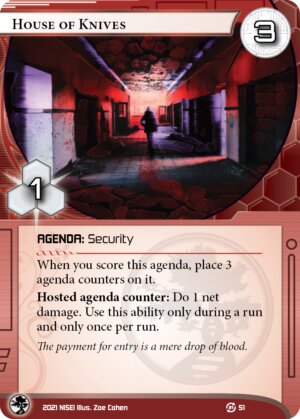
Sometimes, these will get snuck through. The game is certainly a lot harder now. Fortunately, us human beings have something called a brain, so we can mitigate risk.
With HoK scored, it’s dangerous to run more than once a turn. Always consider the amount of surprise damage that can be slammed into you. If House of Knives damage can push you over that threshold of potential death, don’t run. The surprise damage to play around is Sting, Ronin, and Clearinghouse.
Similar with False Lead. With False Lead, keep in mind that if you run second click, you can screw yourself. As such, try to run first click, or maybe third click after drawing twice. If you could hit a trap that would push you into potential death if False Lead gets forfeit, don’t run.
Sting
This card is the main reason we want to check every remote. Even if that card looks like a Snare and has been sitting there for ten turns, it could be a Sting, and if we stole Stings ourselves, we lose the game very easily.
Always calculate Sting damage, both in case you access it or in case it gets scored. It starts at 2. For every scored Sting, you take one more on steal. For every Sting you steal, you take one more from a score, up to a maximum of 4 damage. You must play around Sting scores always. It’s a hell of a lot of damage, and it can be scored from no advancements. If there’s an unadvanced card on the table, always assume that it can be a Sting.
If you have Imp, consider trashing instead of stealing if it dips your hand size too low. One reason of many that Imp is a good card.
Cerebral Overwriter
We lose the game if we hit too many, but our strategy never avoids it. In the end, all we can do is hope that they don’t get drawn. Good thing we win most of the time anyway. By the time the Corp gets halfway through R&D, we already aim to be locking R&D. It’s more likely that we end the game or trash the Cerebral Overwriters than the Corp manages to IAA multiple of them.
If Sting is the reason we check all unadvanced remotes, Cerebral Overwriter is the reason we want to start hitting centrals. Still keep in mind our priorities: Check remotes first.
If you have Light the Fire and a card somehow gets to 3 or 4 advancements, just use Light the Fire in case this shoots you for a bunch of brain damage. You may want to hide it, in case the Corp baits you this way.
Urtica Cipher
Most runners in Startup are needlessly afraid of this trap. It’s very expensive to IAA a card, and eating 4 net damage is a small price to pay in exchange, all things considered. However, recall that this is a strong follow up play.
In general, the important thing to consider with respect to Urtica is this: Urtica is almost always going to be the maximal amount of damage that a single trap can deal. When considering how much damage an advanced card can potentially deal on access, just consider how much damage it could deal if it was Urtica. If you can die to follow up damage if it’s Urtica, don’t run that card.
Ronin/Clearinghouse
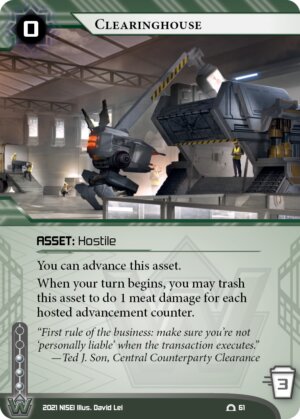
These perform the same function: Dealing damage on the Corp’s turn. When playing around follow up damage, play around Clearinghouse+Sting and Ronin, which are typically going to be the largest sources of burst of damage.
Even letting a single Ronin or Clearinghouse live makes winning the game difficult. This is why we don’t care about hitting IAA’d Cerebral Overwriters. We’re still favoured to win after hitting Cerebral Overwriter, but we’re immensely disadvantaged if a single Ronin or Clearinghouse lives. It’s simply better to check IAA’d cards, even if they’ve (somehow) stuck for several turns and look extremely suspicious. Your psychic abilities don’t exist: Just check it and take the line of play that wins the most.
Play around these when running centrals:
Snare!: I have no idea how people still make this mistake, but don’t access if you have less than 3 cards in hand. You have to play around Sting anyway, even if the Corp has no money.
Anemone: When running centrals, especially if the Corp also has House of Knives or False Lead when this fires, you’re usually going to jack out.
Because of these, don’t run without Botulus or a Boomerang+Killer:
Engram Flush: An annoying ice. Don’t lose your decoder, because you want to run centrals long term, and you’ll have an excess of money anyway.
Saisentan: Boomerang is not enough to break all 3 subs, and Botulus needs 3 charges. You’re in no rush. Don’t facecheck against Personal Evolution without a killer, because Saisentan can kill you.
Trick of Light
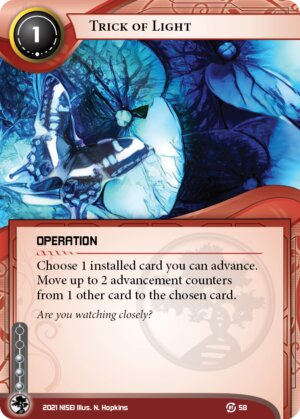
Although this enables House of Knives and False Lead, we’re more concerned about Sting! scores from hand because those do more burst damage. To play around Trick of Light, trash installed Urticas and Cerebral Overwriters so they can’t bank counters.
This is another reason of many that we aren’t scared of Cerebral Overwriters. If a Cerebral Overwriter survives, we can die to Trick of Light plays, so it’s not even that bad to access a Cerebral Overwriter to disable that play, even if temporarily.
Be aware that if a card survives with two advancements, you absolutely must play as if there is a Sting on the table, because that’s what Trick of Light is capable of.
Neurospike
If you’ve gotten to this point, you should understand why I think Neurospike is a horrible card, and why shellgames shouldn’t be on Vulnerability Audit.
Just run IAA’d cards. It’s important.
You don’t even need to play around Neurospike in particular, because we plan on running whatever agenda is installed anyway.
It’s still good to Imp these from HQ, because sometimes you’ll eat a Neurospike Seamless Sting combo, and it really sucks to die that way. It’s fine for the Corp to have if you see it on R&D, because you don’t want the Corp topdecking things like Cerebral Overwriter that actually help them.
Summary: Key takeaways for running
- Play around Snares and Sting! (We can still feel pain if they’re on 0 credits!)
- Assume there’s a Sting! installed.
- Urtica Cipher is a lot of damage, but we can bounce back.
- We don’t worry about IAA’d cards being Cerebral Overwriter: Run them.
- Our primary goal is to check every remote at some point, as quickly as safety allows.
- Once every remote has been checked, use breakers+Botulus+Boomerang to hit centrals.
Closing Remarks
In this guide, I’ve documented basically all of my experience playing with and against Startup shellgame Personal Evolution. I believe that with correct application of this knowledge, anyone can learn the shellgame matchup. Instead of grumpily suiciding into R&D with one card in grip, or running into Saisentan with three cards, maybe remember what you learned here today. Perhaps you’ll become one of the few who learn to enjoy playing against it, because there’s more to the matchup than you realize! I also want shellgame players to advance their own play and realize that there is a real, logical background of skill required instead of so-called mindgames.
Knowing that I helped you, dear reader, is the real reward of making this project. Thank you!




